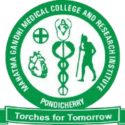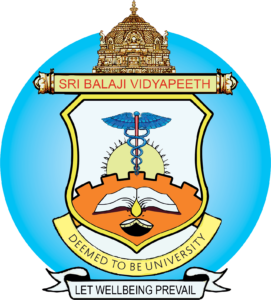Central Sterile Supply Department




Overview
The central sterile services department (CSSD) in MGMCRI, performs the sterilization of medical devices, equipment and etc.CSSD provides adequate facilities for sterile process and is maintained judiciously. Over the years CSSD has acquired massive heed.
OBJECTIVE
To make reliably sterilized articles available at the required time and place for any agreed purpose in the hospital, as economical as possible.
ADVANTAGES
- More effective and standardized sterilizing practice is ensured
- Medical and nursing staffs are relieved of time consuming routine work
- A noise and heat producing process is removed from patient’s area
- Accountability, supervision is provided for general instruments and equipments
- Bulk ordering materials centrally leads to a reduction in cost.
SCOPE OF SERVICES
CSSD, the vital department of the MGMCRI hospital is responsible for receiving, washing, storing, processing, sterilizing and distributing to all the departments of patient are areas, of the hospital. The department runs appropriate control to ensure sterile supply of each article thus help in reduction of incidence of hospital cross infection.
Since CSSD is being considered as the heart of a hospital it is located centrally to supply its material to various departments, preferably it is in the same building of major departments. Beside for easy access to stores where it gets raw material. Lift is available for sterile goods. In addition to this an issue counter is present to issue sterile packs to wards. Materials are stood at 8-10 inches from the floor, 18 inches from the ceiling and 2 inches from outside walls.
The traffic flow of the entire department proceeds from dirty to clean with two distinct areas and entrance/ exit. Separate hand washing facilities provided one in dirty area and another in clean area. Decontamination area is physically separated from the packing, sterilizing and storage areas. Instruments processed by the department flow from dirty to clean. The steam sterilizer/gas sterilizer in housed in a separate area. Decontamination, sterilizer rooms have direct exhausting of all air to the outdoors. Floor of packing, loading, sterile storage area is epoxy flooring.
All staff working within the department has a thoroughly documented orientation to all specialized equipment for which they are responsible. Those working in the department show competency in all skills & tasks expected of them as described in the job description. Ongoing competency testing with respect to asepsis & sterilization is in evident. When gaps in competency are identified, there is evidence that deficiencies have been corrected & all education is documented.
PLAN OF CSSD
CSSD is divided into three areas.
DIRTY/ CONTAMINATED AREA.
In this area receiving of used instruments, washing is taken place.
Instruments are rinsed immediately soon after the use by the user department is self. Blood & debris never be allowed to dry on the instruments, extra care is taken in the instruments which have hollow tube; since it is strongly recommended, these instruments should be flushed thoroughly prior to the routine procedure to get rid of blood caking inside and obstructing the tube.
PPE
PPE in the area is cap, mask, grow apron, gloves & goggles instrument washer cum drier is an ideal method which is used to wash & terminally sterilize soiled instruments after a clean or septic case, this combines automated cleaning with thermal water spray action known as impingement, steps include a cold water pre-rinse, wash, rinse, final steam cycle & drying cycle using heated air, while using washer, the instruments are arranged with locks open, cutting edges are protected from other instruments, all the instruments are disassembled & heavier instruments are placed at the bottom of the basket.
Manual washing: soak the instruments 10-15 mts in the prepared bath then do the washing, after washing instruments are dried by using clean cloth.
ENZYMATIC CLEANERS
- Enzymatic Cleaners are specially used. This breaks down large organic molecules into smaller ones.
- Protease which break down proteins (blood, mucus & albumin)
- Lipase which break down fat deposits (bone marrow & adipose tissue)
- Amylase which breaks down carbohydrate (starch)
- For both washing the ratio of the solution is (8ml of enzymatic cleaner in 1000 ml of water) the prepared bath is changed 3 hourly.
ULTRASONIC CLEANER
Micro & delicate or special instruments are washed through an ultrasonic leaner.
When an ultrasonic wave passed though a liquid it makes the liquid vibrate very fast due to the micro gas bubbles developed & implode, this draw out tiny particles of dirt.
LUBRICATING
Prolong the life expectation of the instruments & prevent abrasion on instruments moving against each other, routine lubrication is done once a week.
CLEAN AREA
AREA FOR INSTRUMENTS
PPE
cap, mask & gloves
CHECKING
Checking the quality of the instrument is done before packing. For any kind of damages, rust, over-lapping, jumping, too loose/tight. If the jaws over lap they are out of alignment. If the forceps have serrated laws, check to see if teeth are meshing properly.
Scissors should cut layers of gauze at the tip of the blades. Ratches are examined by opening & closing. This is done smoothly in order to avoid spring open.
ASSEMBLING
Instruments are assembled according to the check list for a particular surgery & are signed by the two personals.
Internal indicator strip is placed along with the instruments to check the penetration of steam & is identified by the user.
PACKING
Disposable wrappers are double layered to enhance barrier qualities. Holes, Staines& any kind of damages are inspected.
LABELLING
Printed labels are placed which contains name of the tray, & machine batch no, sterilization process.
ARRANGING
Trays & packs for steam sterilization are arranged in a trolley in vertical position. 1-3 inches gap is left in-between each pack & not overloaded.
LOADING
About 1-3 inches gap is left in between trolley &champer of the machine.
DRESSING MATERIALS
Dressing materials are folded and packed in paper plastic pouches double paper cover in different sizes according to the surgery.
ADVANTAGES OF PAPER PLASTIC POUCHES
- They can be used for steam, gas.
- They have self indicators for sterilization process.
- Easy penetration & aeration.
INSTRUMENTS
USE AND ABUSE OR INSTRUMENTS
Haemostatic forceps are designed to clamp blood vessels. They are no means of towel clips, Suction tubing claps, needle holders or Pliers. Scissors require extraordinary attention. Tissue scissors are used for tissue dissection only, Suture scissors to cut Suture materials only, and wire scissors to cut scissors only, as well as other sharp instruments also guarded against abuse. Using of wrong scissors for wrong jobs can cause miss alignment of the tips. Bone cutting forceps are used to cut only bones but not pin or wire. Careful planning and selection of instrument sets is required and also ensure that the right numbers of instruments are available for each surgical procedure. Proper use of all instruments are available for each surgical procedure. Proper use of all instruments will ensure that the extensive life and functioning well when needed.
STERILE STORAGE AREA
UNLOADING
Unloading is done in sterile storage are. External indicator is checked fror color change & checked for dryness of the pack. Arrange in the racks according to the dates that is early first.
HANDLING OF STERILE PACKS
Contact with sterile packs is avoided as far as possible & use sterilium before touching the packs. Packs are not hugged, squeezed, bumped into, and leaned on while counting. Any sterile item that fall on the floor or wet is considered to be contaminated & sent reprocessing. Packages are not dragged or pushed against any surface as this could cause the wrappers to become loose or create a tear or hole.
ISSUING
Through the Lift & counter.


